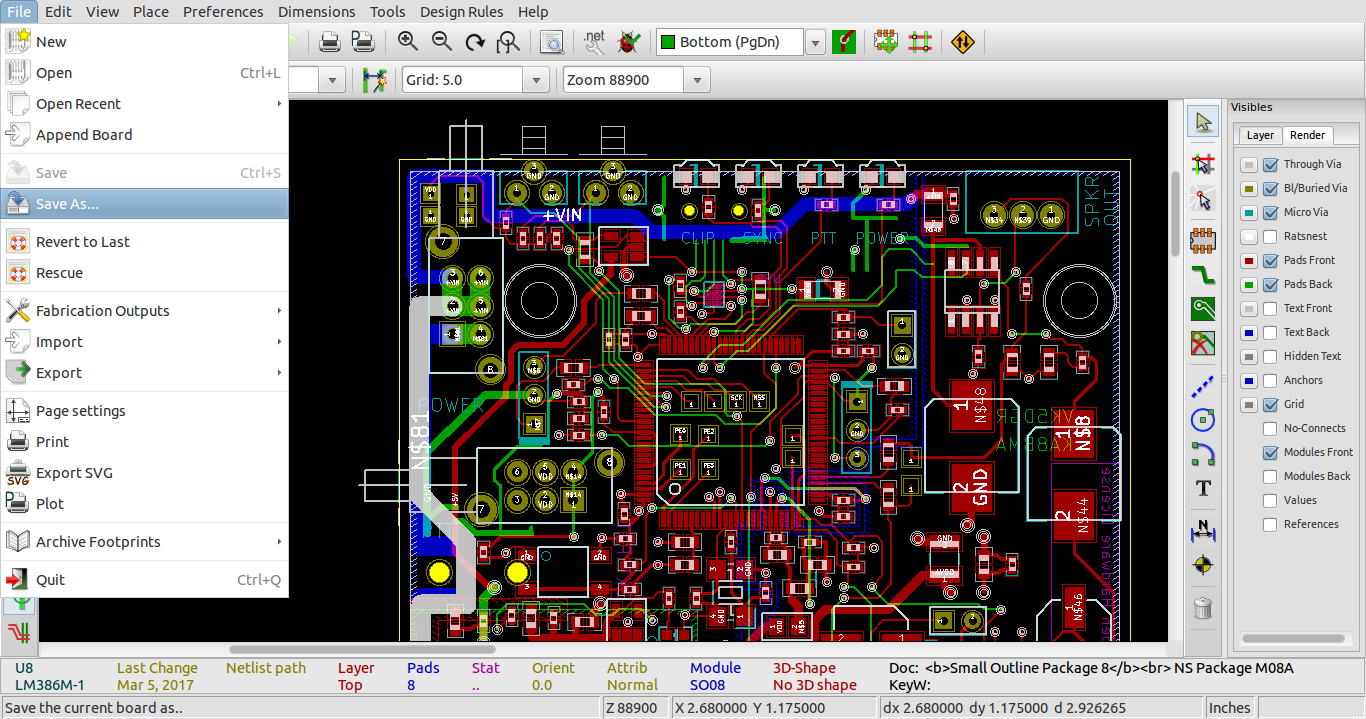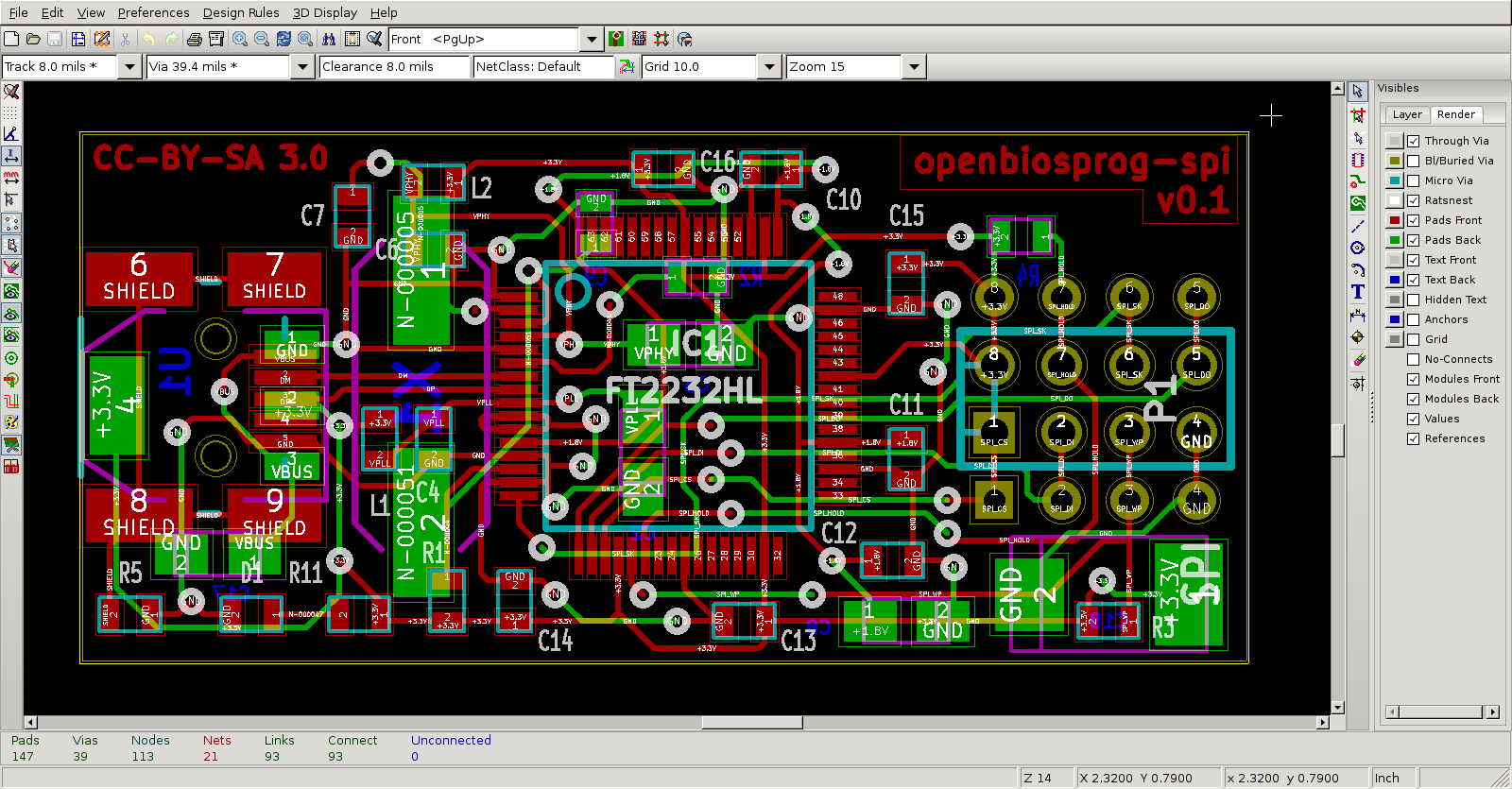KiCad is an open-source software tool for the creation of electronic schematic diagrams and PCB artwork. Beneath its singular surface, KiCad incorporates an elegant ensemble of the following stand-alone software tools: KiCad can be considered mature enough to be used for the successful development and maintenance of complex electronic boards. The.sch,.lib,.brd,.kicadpcb and.kicadwks file formats are specified in this legacy PDF documentation. Newer file format documentation is a Work In Progress.pro: project file. Holds parameters that apply to the entire project (schematic and PCB layout). Community engagement and the growth of KiCad as the premier Open Source EDA.
.pro: project file. Holds parameters that apply to the entire project (schematic and PCB layout)..sch: legacy schematic file..kicad_sch: the new schematic layout file..lib: schematic symbols library file.-cache.lib: … a local copy of all the symbols used in the corresponding schematic, so that when the folder containing a KiCad project is copied to a different PC, the schematic can still be opened and printed and will still look the same as the original draughtsperson intended - even if that other PC does not have those symbols in its main libraries (or has symbols that coincidentally have the same name but are completely different).-rescue.lib: … copies of conflicting/missing schematic symbols.
.mod: legacy footprint module file (Obsolete, can only be read)..pretty: footprint library folders. The folder itself is the library..kicad_mod: footprint files, containing one footprint description each..000: * temporary file..bak: backup of schematic file..brd: legacy PCB layout file..kicad_pcb: the new PCB layout file.-save.kicad_pcb: … backup of the PCB Layout file.
.cmp: deprecated parts-to-module assignments file. Footprint informations are now saved in the .sch files..csv: commonly used when exporting BOM file..dcm: holds descriptions, aliases and keywords for library symbols..bck: backup file for the symbol editor of the.dcmfile..net: *: netlist in 'Pcbnew'; format … can be regenerated by viewing the schematic file and clicking the 'Netlist generation' button.fp-info-cache: *: Footprint info cache: cache of information (description, datasheet URL, etc.) for all footprints used by the board.fp-lib-table: Footprint library list (footprint libraries table): list of footprint libraries (various formats) which are loaded by the board or the footprint editor or CvPcb.sym-lib-table: Symbol library list (symbol libraries table): list of symbol libraries which are loaded by the schematic editor.drc-rules: S-expression file containing design rule checking constraints. Introduced in v6..kicad_wks: The page layout description files, for people who want a worksheet with a custom look..rpt: report file, for documentation..gbr: Gerber output files for manufacturing..drl: Gerber drill file for manufacturing..pos: position files (ASCII format), for automatic insertion machines..wrl: VRML 3D model used in the 3D viewer to represent parts..stepor.stp: STEP 3D model used for integration with MCAD software packages. KiCad supports STEP file integration and can export board and component models into an integrated STEP file.
What is KiCad?
KiCad is a free, easy to download software that is used for electronic design automation (EDA) and computer aided design (CAD). While using this program, PCB design schematics can be realized from their electrical circuits. Within, there are tools that allow the creation of a bill of materials (BOM), artwork, 3D view of the PCB + components and gerber files. This documents purpose will be to guide Bittele’s clients through the step by step process specifically for generating the gerber files using KiCad. Similarly, a guide for exporting gerbers using another commonly used program (Eagle) can be found here.What are Gerber files?
Gerber files are the artwork of the layers that will be used to construct the board once it’s being fabricated. The industry standard file type used for manufacturing and assembling PCB’s are gerber file types. Therefore, they are easily recognized and processed by our manufacturing equipment.Generating Gerber Files
This guide assumes that you have finished designing your PCB within KiCad and are ready to export the gerber files.1) Select the ‘Plot’ button (located next to the printer icon).
This will open the plot window.
The image above shows the many different layers that are used in this example project. In general, there are only 10 layers that are required for PCB fabrication and assembly (paste layers not required for fabrication only):

- Top Copper (Top) + Top Soldermask (F.Mask) + Top Silkscreen (F.SilkS) + Top Paste (F.Paste)
- Bottom Copper (Bottom) + Bottom Soldermask (B.Mask) + Bottom Silkscreen (B.SilkS) + Bottom Paste (B.Paste)
- Board outline (Edge.Cuts)
- Drill file (not shown in image above)
3) Under the messages window will show where the drill files have now been generated. Click on the close button to return to the previous window. Click on ‘Plot’ (beside Generate Drill File). The gerber files for the layers will be generated (shown once again under the messages window), then click ‘Close’.

4) Once your gerber files have been generated, they can be reviewed to catch any potential errors before being sent to us for a PCB fabrication quote. Return to the main KiCad project window and click on the GerbView – Gerber viewer button (see image below):
5) On the window that pops up, click ‘File’ > ‘Load Gerber File’.
6) Select all of the layers shown and click ‘Open’.
7) In the same manner, click on ‘File’ > ‘Load EXCELLON Drill File’.
8) Select the drill file(s) and click ‘Open’.
Notice here that 2 drill files have been created. The first represents ‘plated drill holes’ while the second represents the ‘non-plated drill holes’. This will lead us to seeing 11 files instead of 10 files later.
9) Once all of your layers have been imported into GerbView, you can perform all your final checks (you can view each layer one by one and so on). Once you are satisfied that your design is correct, you will be ready to quote and order your boards.
10) Navigate to the directory on your computer where your KiCad project resides. Select and zip the following 11 files:
A list explaining each type of file can be seen below:
- *.drl - Drill file
- *.gbs - Gerber Bottom Soldermask
- *.gbp - Gerber Bottom Paste
- *.gbo - Gerber Bottom Silkscreen (Overlay)
- *.gbl - Gerber Bottom Layer
- *.Edge.Cuts.gm1 - Board Outline (Gerber Mechanical 1)
- *.gts - Gerber Top Soldermask
- *.gtp - Gerber Top Paste
- *.gto - Gerber Top Silkscreen (Overlay)
- *.drl - Drill file
- *.gtl - Gerber Top Layer
Kicad Pcb Software

This guide’s aim has been to describe the procedure for generating Gerber files from KiCad as simply and completely as possible. If you still find yourself unclear on any part of the process, please do not hesitate to contact a member of the Bittele sales team by sending an email to sales@7pcb.com, or calling our Toronto office at 1-416-800-7540. We are happy to help with any of your queries.
Open Kicad_pcb File Online
Related Articles:Kicad Schematic To Pcb
Kicad File Types
Search articles: